
This time of the year, yellow mustard blankets the fields of Sonoma and Napa Valleys and much of our agricultural soil. The vines are resting. Soon this plant will be gently tilled into the land to provide valuable nutrients to the awakened grapevine roots. In the garden, the tulip magnolia is in full bloom. Such a welcome sight, with its large purple and white flowers it has a beautifully subtle fragrance as you stroll or ride a bicycle quietly by.
 Mustard in Kenwood
Mustard in Kenwood
The brilliant yellow wild mustard signals that spring is upon us. The days are getting a touch warmer and we see the sun just a bit more. This mustard belongs to the Brassicaceae family of flowering plants. Broccoli, cabbages, horseradish, watercress and turnips are fellow members of this large and complex family. Distinguishable by its sharp, distinct, somewhat sulphurus taste, it is most commonly grown here to bring nutrition to the soil. A feast for the grape vines, it thrives just until bud break when it is then turned under to mulch and provide valuable phosphorus to the emerging vines. When grown for it’s greens, as the weather becomes warmer, the hot flavor continues to develop. That is why early spring, when it is still cool, is ideal for viewing and tasting this valuable flowering plant.
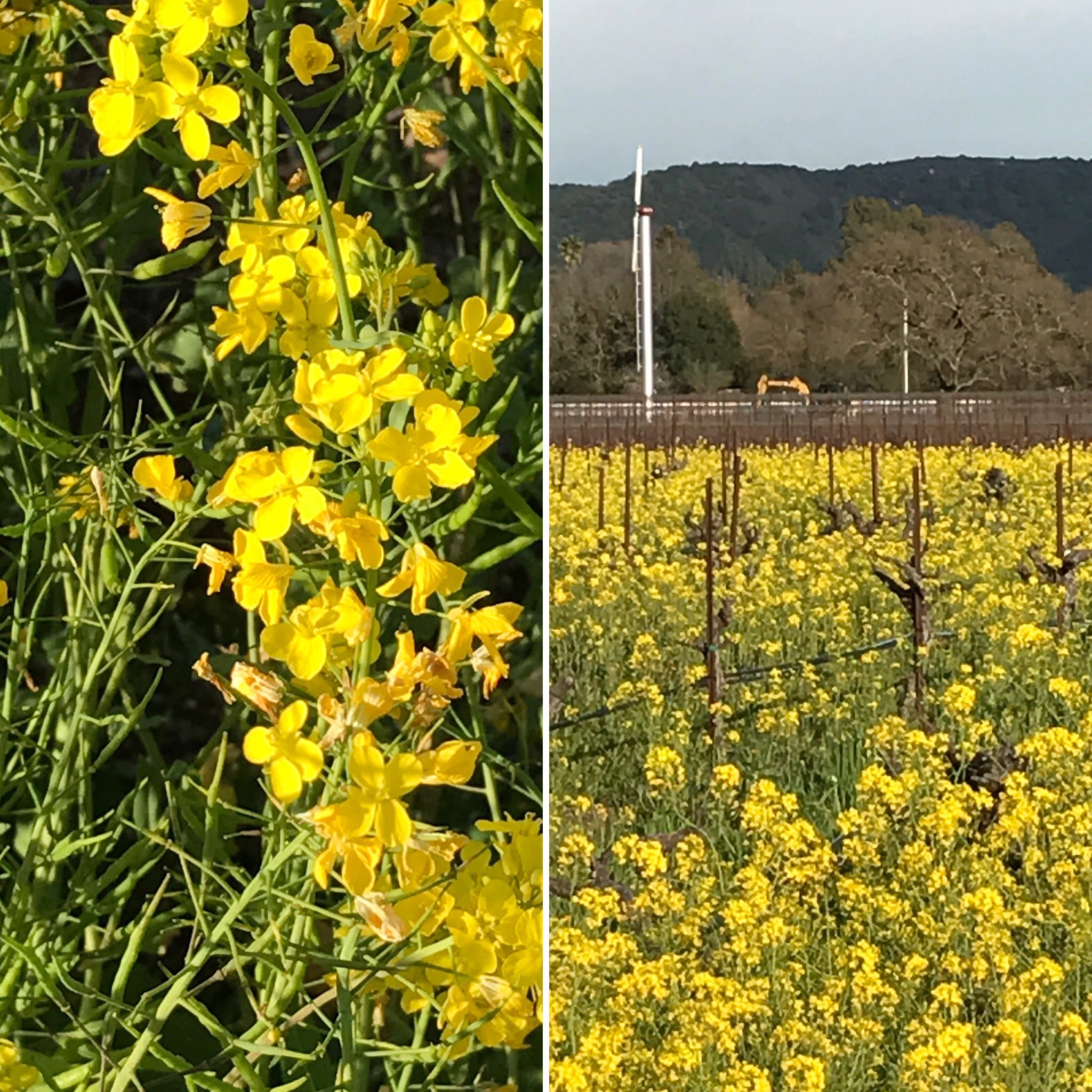
Legend has it that a Franciscan missionary first spread the mustard seed while landscaping church properties throughout California. The seeds were simply carried in a large sack slung over his back, each sack had a small hole in it, as the missionary walked the seeds would fall to the soil and take root. Today, much of that early mustard is still growing wild and is quite useful to hold steep hillside soil in place during heavy rains, such as we have had this year. Of course, very smart vineyard managers also plant the seeds for soil nutrition reasons and for the simple beauty of the yellow, gold and orange blanket which it creates amongst the orderly march of the vines.
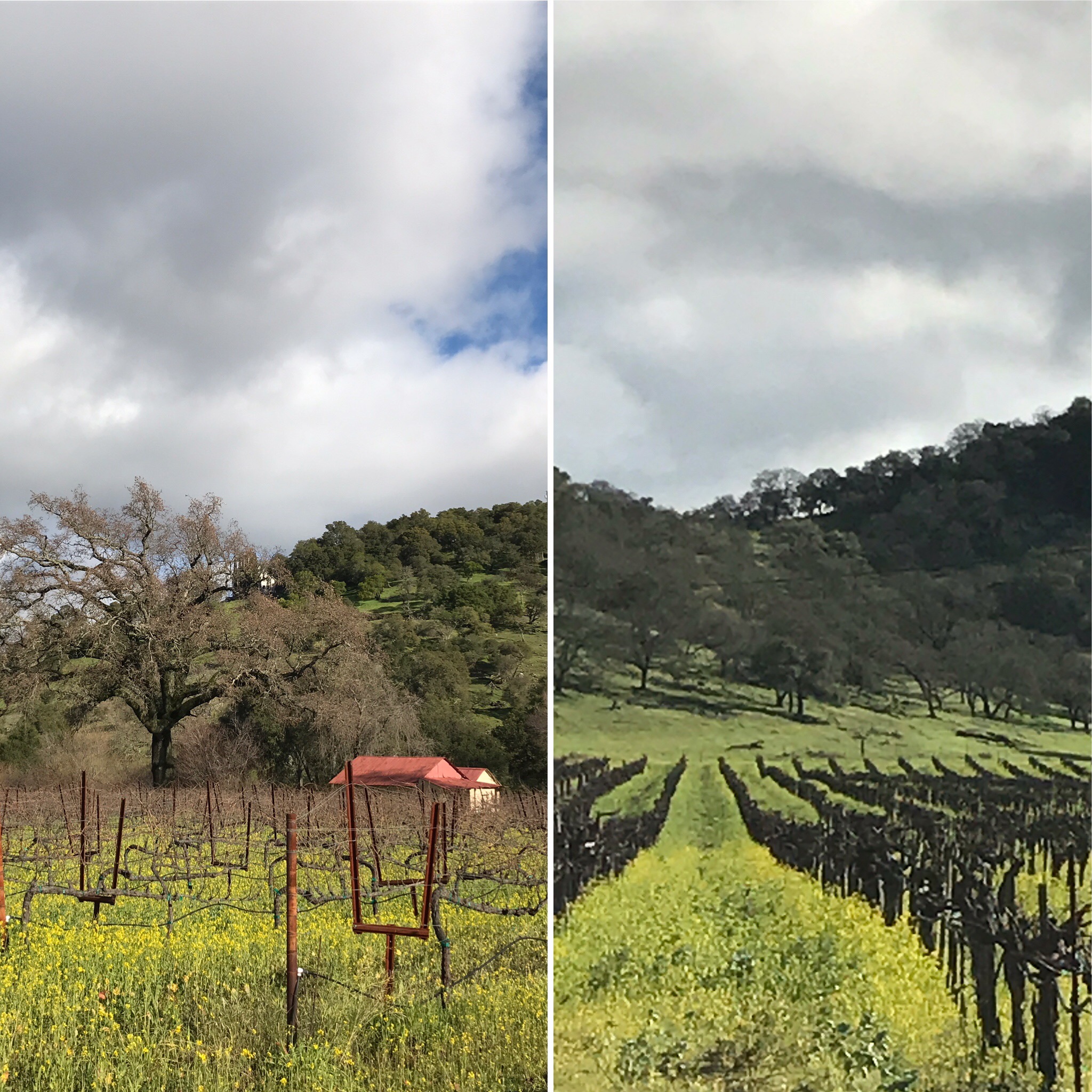 Napa mustard after a storm
Napa mustard after a storm
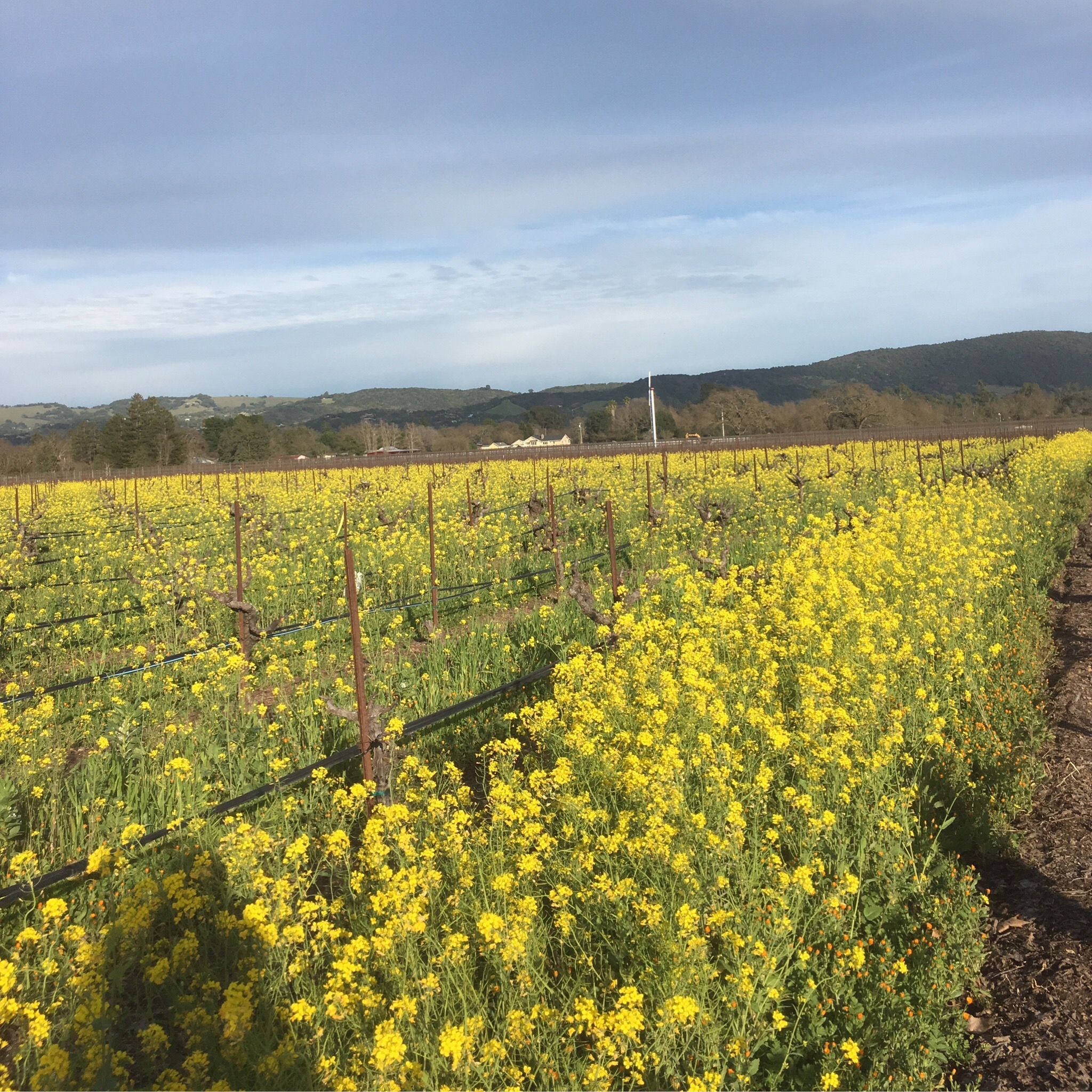 among the vines, small vineyard in Sonoma
among the vines, small vineyard in Sonoma
 red tail hawk with a watchful eye
red tail hawk with a watchful eye
 speaking of Spring, the magnolia trees are just beginning to bloom
speaking of Spring, the magnolia trees are just beginning to bloom
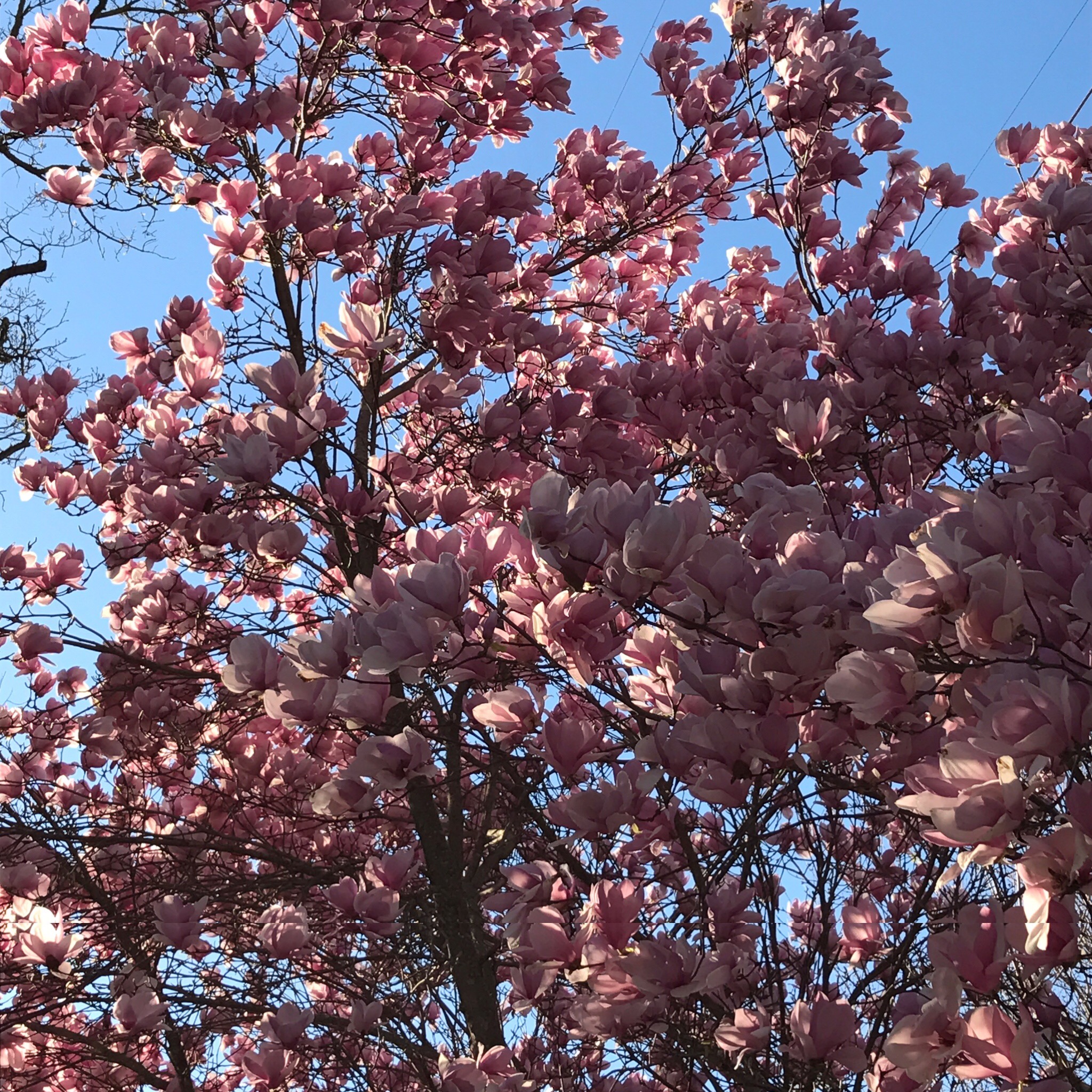
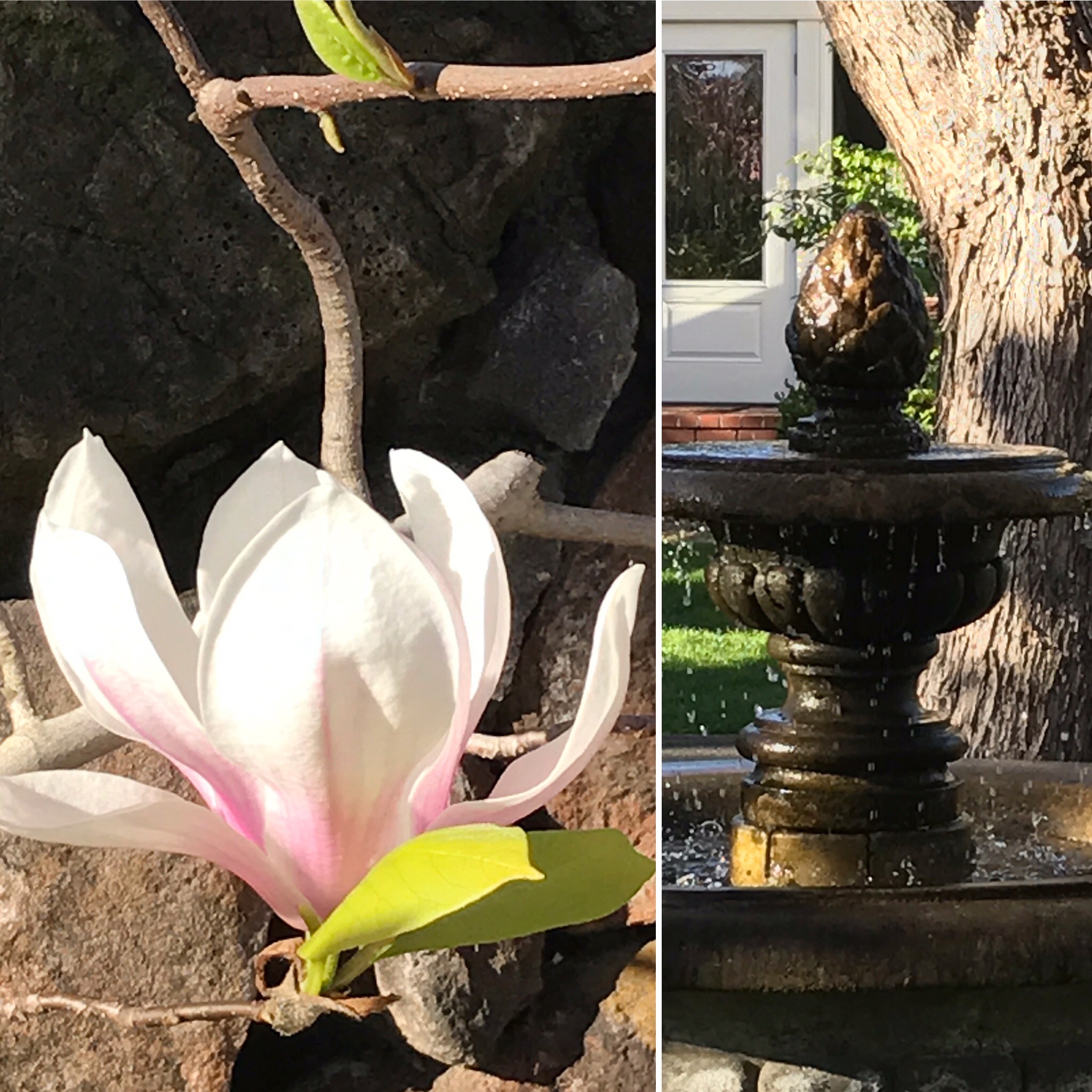
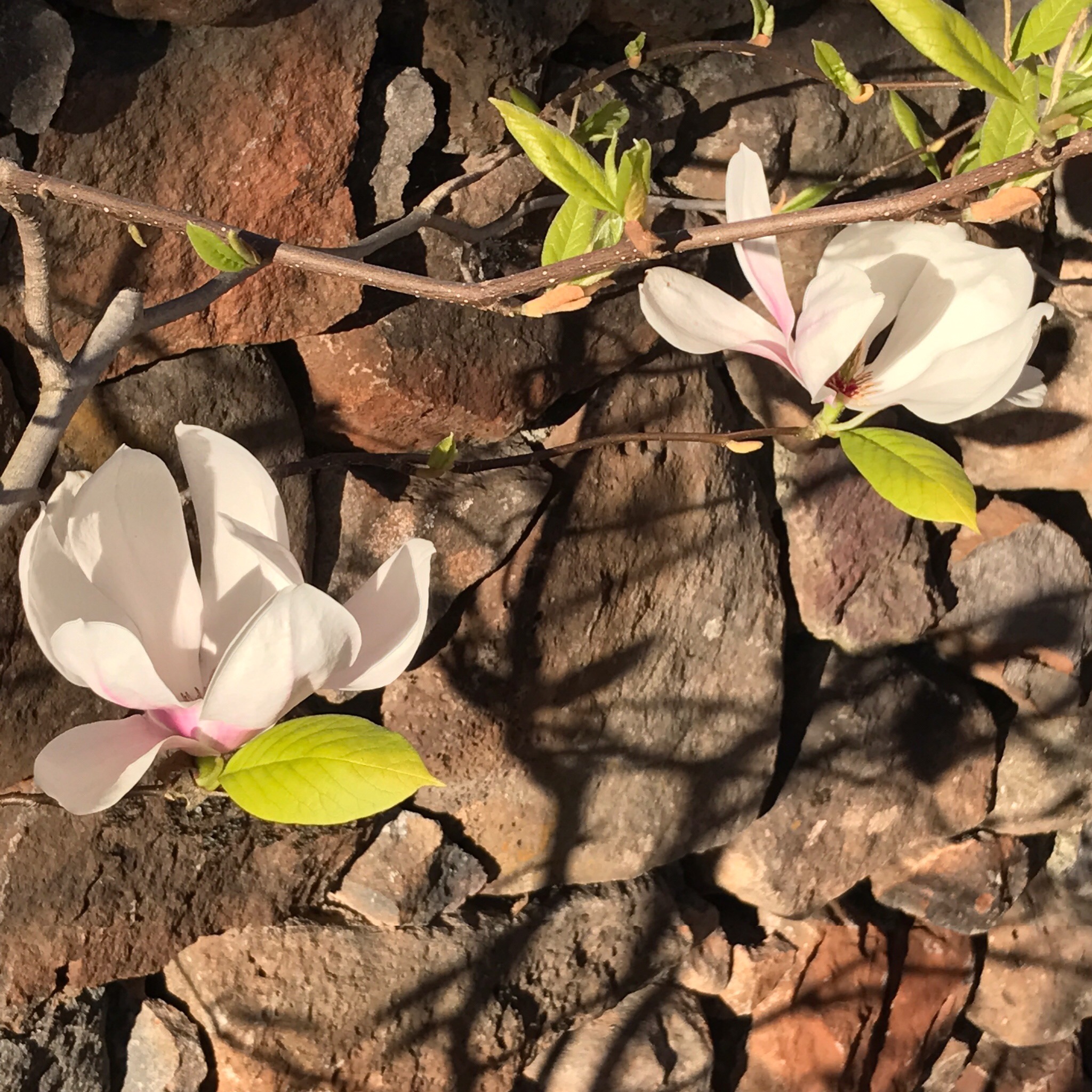 Magnolia flowers in Sonoma
Magnolia flowers in Sonoma
The magnolia is loved for its pretty foliage and glorious flower display; it is also heat resistant and tolerant of damp soil. Although this slow growing tree can take some drought, they look their best only when amply supplied with water. That was certainly the case this year in the Sonoma and Napa Valley. With our record breaking amount of rain, the blooms of the trees shown here were especially abundant and lovely.
Watching the coming of spring is a miracle of reinvigoration. It is always such a welcome and immutable act of joyful continuity.
